sustainable organic municipal waste treatment.
how to start? waste2energy.
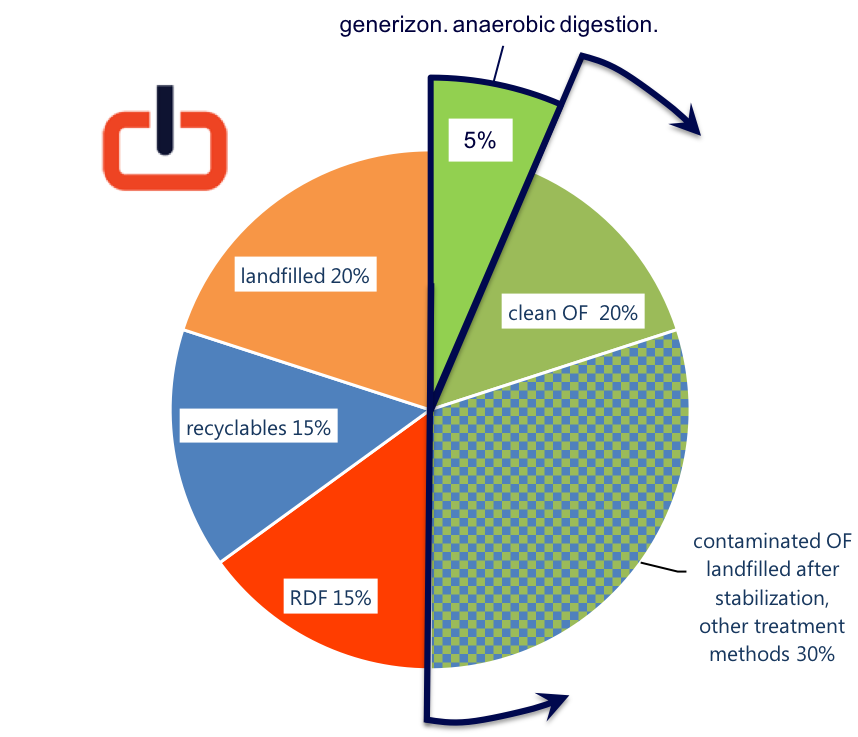
generizon solution. waste2energy. anaerobic digestion AD.
- modular solution. in steps. to be scaled up.
- first phase begins with 50t / day of the organic fraction (OF) of municipal solid waste (MSW) of a city.
- this is easy. it is available in pure, clean and aggregate form today.
- the solution can be scaled up for 20% of MSW. and more. we only take organics.
- 100% durable. 100% circular.
- landfilling diversion. without leachate.
- the organic fraction (OF) shall be pure. without contamination.
- liquid. wet. semi-dry organic waste.
- fermentation happens inside the digester. odorless. without greenhouse gas emissions.
- a single digester avoids 10 – 20,000 tonnes of CO2 equivalent emissions per year.
- 10 GWh/year or more of thermal energy. to replace heavy fuel or propane in a boiler.
- decarbonize heat in industry.
- or 500 – 900 kW CO2 negative clean electric energy production (biogas). 24 hours a day. 365d.
generizon. expertise. Moroccan context.
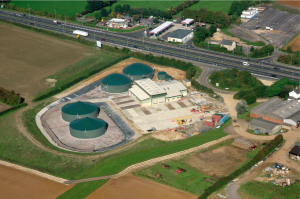
Two pre-feasibility studies in 2018 on the organic waste streams in Marrakech and Tangier, carried out by generizon/MSConex, and commissioned by the European Investment Bank (EIB), show:
- the immediate availability of a sufficient quantity of organic waste in aggregated and clean condition today, which goes to the landfill,
- it is profitable,
- any effort upstream is much cheaper than dealing with the consequences of business as usual and the nuisances downstream. (similar to the Corona virus, the longer you delay, the more you pay).
Furthermore this sustainable organic waste management solution is based on generizon’s years of experience. This allows us to properly identify and deal with the problem of organic waste.
coexistence with other waste treatment processes.
The treatment of organic waste by anaerobic digestion is a solution that can coexist with any other form of waste recovery or utilization (incineration, landfilling, pyrolysis, MBT, RDF, etc.).
Processing the wet organic waste streams can support the proper functioning of other types of treatment, which usually require much drier material. In the same sense, if the wet organic fraction is removed, the recyclables will be less soiled, easier to collect, recuperate and sort, informally or formally in a waste separation line, MBT.
If you organize the organic waste sector this has considerable positive impacts on all other waste streams.
clean organic. 50 tonnes / day / unit. modular. replicable.
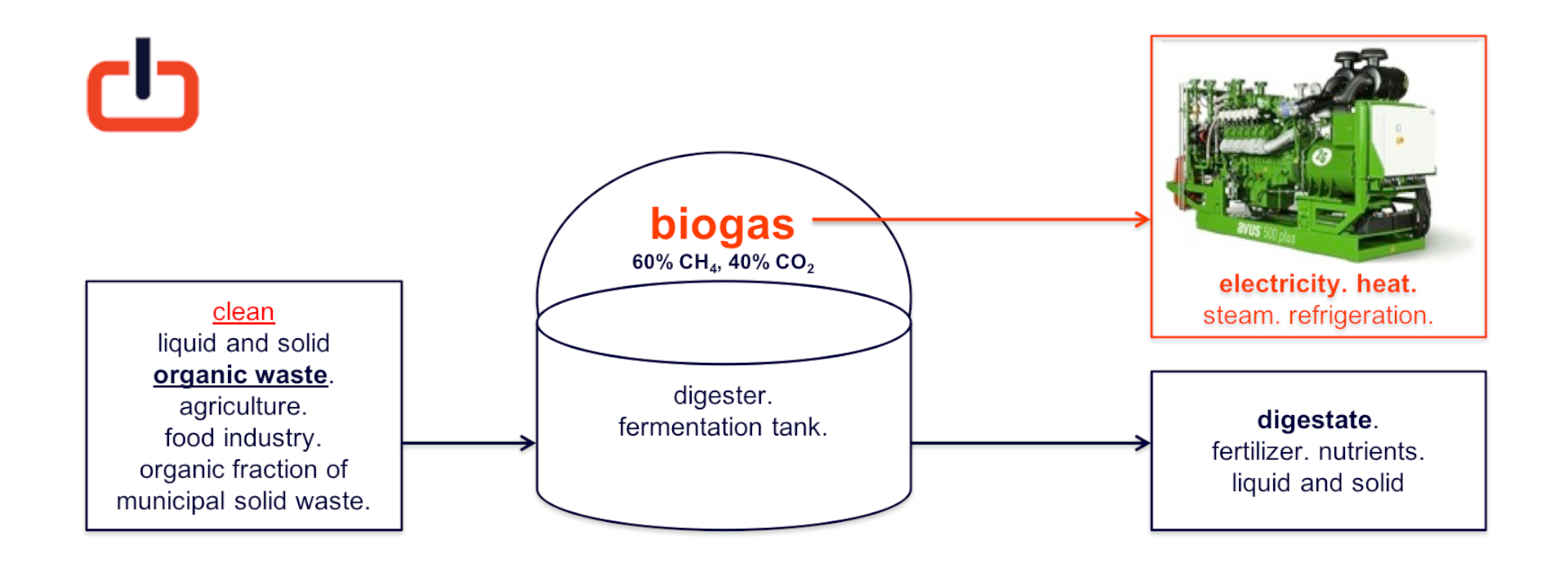
input / substrate targeted.
- local and wholesale markets. fruits and vegetables. chicken and fish waste.
- slaughterhouses. poultry and red meat, rumen content, grease, sludge and wash water.
- supermarkets. expired food. degraded and returned.
- seized, spoiled food by inspection authority.
- agro industry. food processing units.
- kitchens. restaurants and hotels, canteens.
solution. technology.
- 50 t / day. it’s doable.
- a single digester.
- pretreatment, pumping.
- stirring, mixing, heating.
- hygienization.
- biogas production.
- gasholder. biogas storage / capture.
- mitigation of 10 – 20,000t CO2 eq./year.
- without leachate.
output. products. what are the gains?
- 500 to 800 kW of clean electrical energy. 24h / 24, 365.
- negative GHG emissions.
- 4 to 5.7 million kWh of net electrical energy.
- 2.7 to 4 million kWh of net thermal energy.
- biomethane, sustainable mobility.
- digestate, bio-fertilizer.
- carbon credits. ITMO.
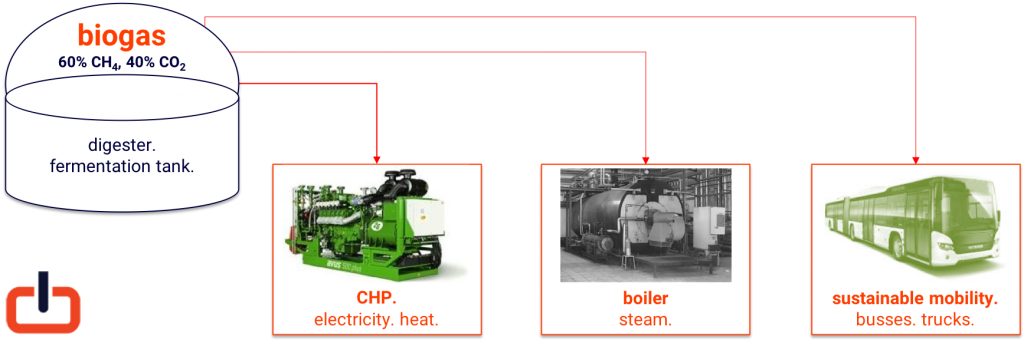
in phases. step by step.
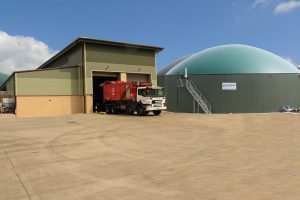
generizon’s waste2energy program aims for the treatment of 20% of municipal solid waste MSW, which corresponds to 30% of the organic fraction of MSW. This program modular, it is carried out in phases:
- first phase, any large city can easily redirect 5 to 7% of its own aggregated waste streams to the digester. The first phase of the program envisages 11-15 projects.
largest city/conglomerate: 3-4 digesters,
city 2: 2-3 digesters,
3-5 other cities, each one 1 digester. - then in second phase redirecting up to 10%, still easily achievable.
- redirecting 20% requires the installation of advanced collection and sorting systems.
example of a city with 1000 t household waste / day. Agadir. Tangier. Marrakech. Fez.

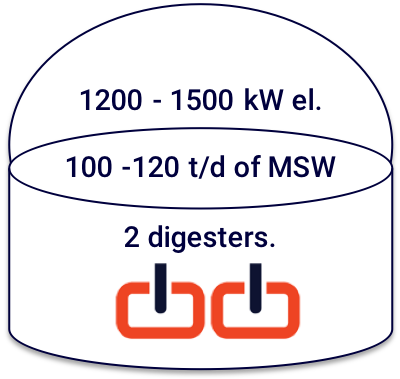
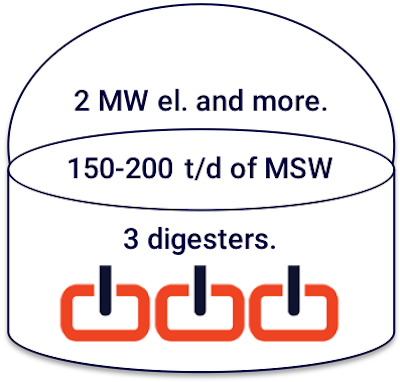
The economic, social and environmental benefits are to the advantage of all stakeholders: city, citizens and operators.
- eventually 20% of our waste is diverted from landfills.
- with 50% less leachate production.
- up to 100,000 tonnes of CO2 per year equivalent in GHG saved.
- 2 MW of electricity with negative CO2 emissions. 24 hours a day. 365 days a year.
- supports changes of all related waste sorting and collection management issues.
- without leakage. odorless.
- job creation. development of biogas waste sector.
- 100% circular.
generizon is clean. sustainable. feasible.


